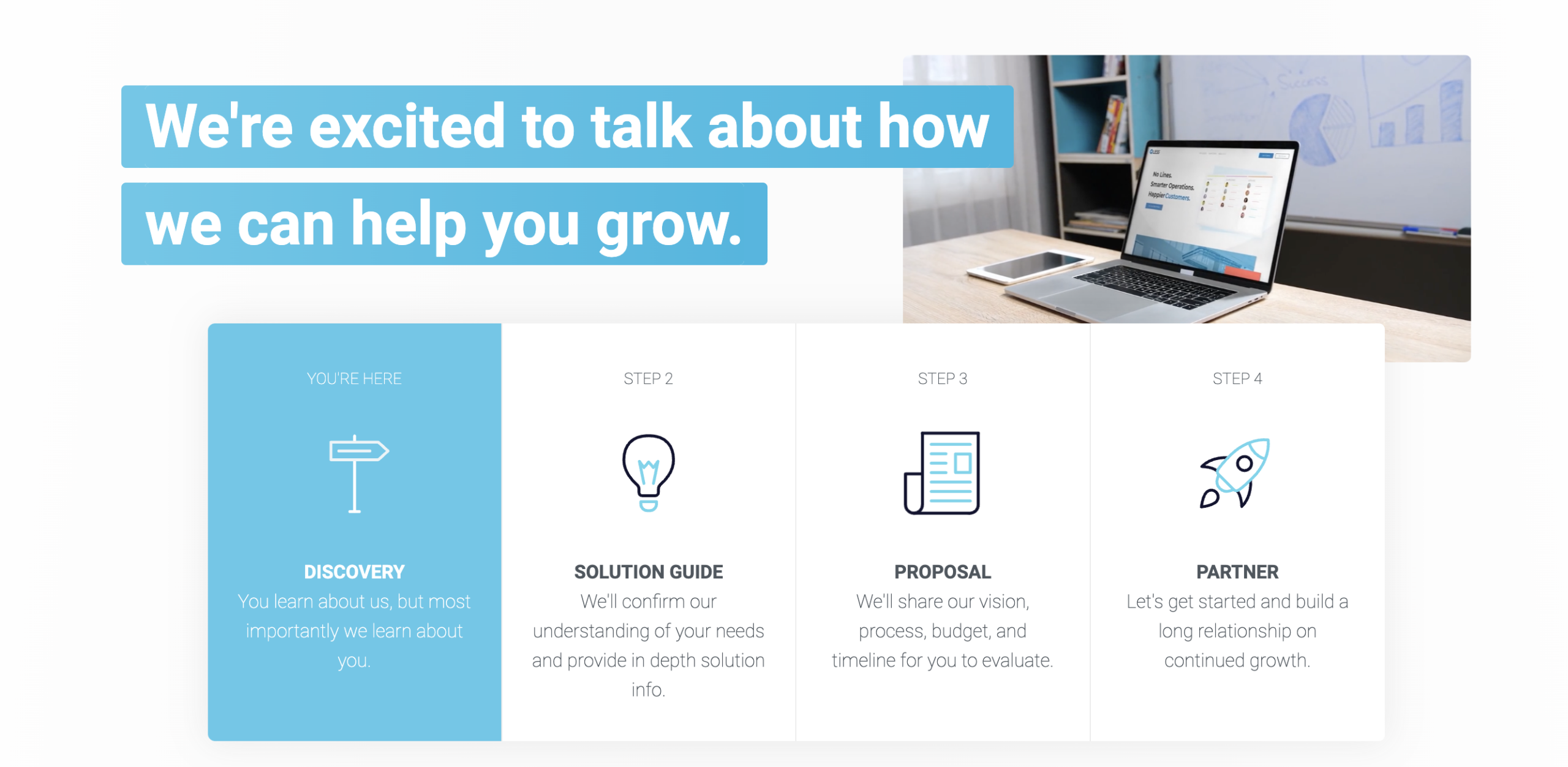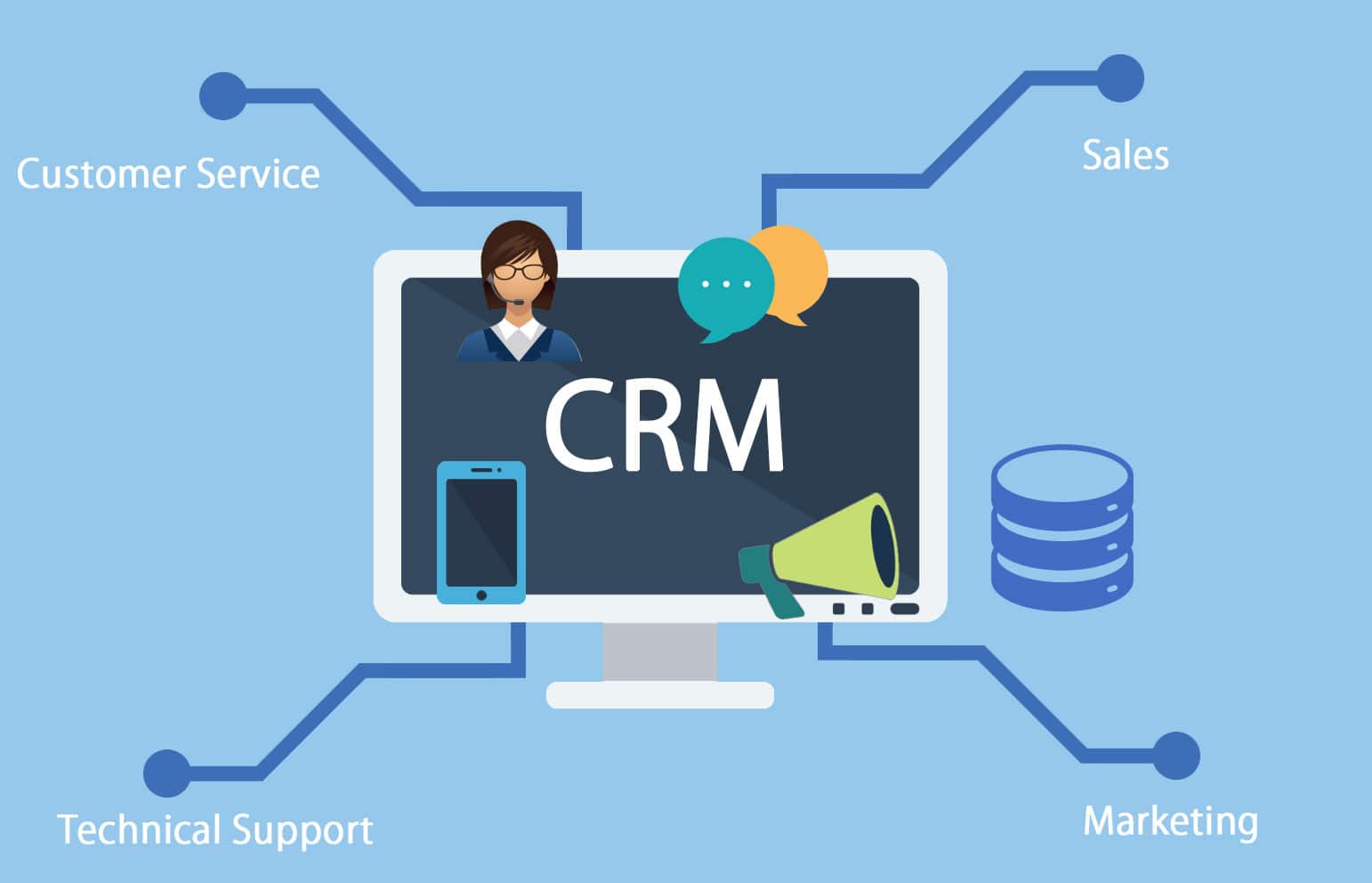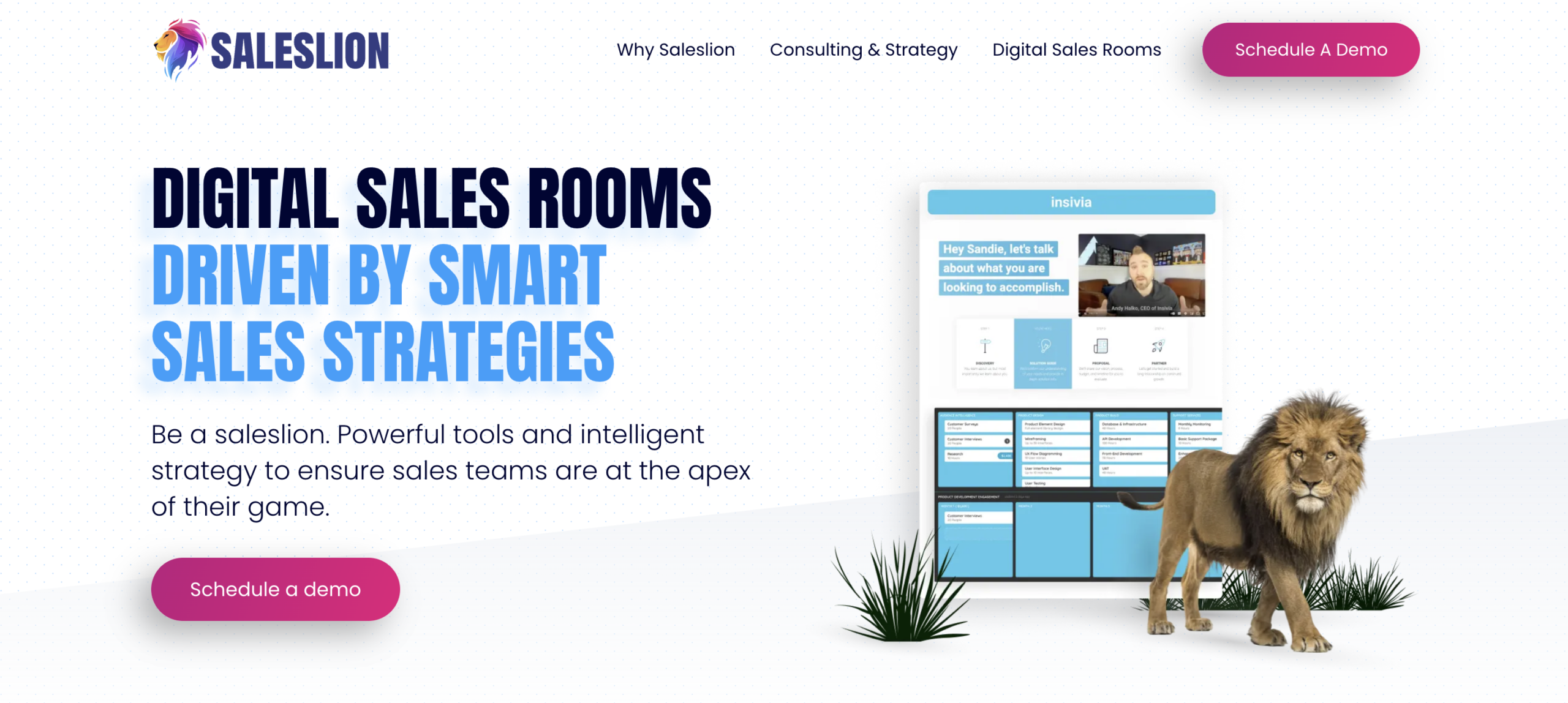With the increased use of technology and design in marketing, many sales reps are turning to these resources as a way to increase efficiency and close deals faster.
Incorporating quality design and effective technologies into a sales strategy is one of the best closing techniques you use as a SaaS company to boost revenue. Relying on outdated sales systems, such as spray-and-pray cold emails or stark PDF proposals, is no longer effective or accepted by customers.
Especially in today’s digital age when personalized sales experiences are becoming more of a must-have, utilizing design and technology features in the sales process is often the determining factor between competitors.
The Role of Design and Technology in Sales
From streamlining processes and reducing manual tasks to focusing more on customer experience, design and technology are both invaluable assets for sales teams and professionals.
The role of design in the sales process is often to create a more interactive customer experience, from the initial discovery call with a salesperson to the deal itself.
And the role of technology is to automate certain processes, such as tracking customer data and creating reports.
Sales process playbooks and platforms are also becoming increasingly important when it comes to leveraging design and technology in sales. These tools help companies understand their ideal customers’ pain points, design customized resources for their customers, and uncover how they can best use technology to address those pain points.
Overall, design and technology have become integral components of successful sales strategies. By leveraging these tools in tandem with traditional methods such as relationship building and strategy development, businesses can create a comprehensive approach that leads to increased revenue growth.
Benefits of Using Design in Sales
Good design is a bit of a vague concept. It can often be subjective. But there is certainly objectivity to quality design. You will know good design (or bad design) when you see it.

And while good designs are nice to look at (like the left side of the image above), they are also crucial players in the customer satisfaction game.
One of the many services we (Insivia) provide to SaaS companies is website design and development. This is because we fully understand the importance of UI/UX design.
Good design is important in website UI/UX because it enhances customer satisfaction, provides engaging content and easy navigation, improves page load speed and mobile responsiveness, establishes trust and credibility, maximizes ROI, and addresses user needs directly.
All of these factors contribute to a better user experience which can help the companies we work with achieve their goals.
Good design also presents itself during the stages of the sales cycle. From designing a discovery presentation to incorporating graphics into the sales proposal, good design can be an invaluable asset to sales reps when it comes to closing deals.
Here are 3 key reasons why that is the case:
Enhancing Presentations and Visualizations
Good design helps create a positive first impression, which can be the difference between making a sale and not.
When used in the discovery phase, quality designs can be effective at inviting potential customers to engage further with your company and learn more about your service or product.
These designs can take the form of digital sales room discovery pages, like the one below, or even animated explainer videos that walk prospective customers through your solution and how it will solve their problems.

Once that awareness has been built and your prospects grasp a general understanding of how you will benefit them, you can bring them further down the funnel with demos and more in-depth presentations.
According to this post by Nathan Baugh, your hook is the difference between an engaged audience and no audience at all. Nathan is referring to a writing tip from Julian Shapiro, but the same is true for sales
Quality design is like the hook in a great story. If the hook is uninteresting, people will stop reading, likewise, if the initial design in your discovery call is unengaging, prospects will not continue down the funnel.
Creating a strong design, a strong hook, will invite prospects to eagerly anticipate their next call or meeting with your company and take more ownership of their sales cycle.
Clarifying Complex Ideas
Another major benefit of using design in the sales funnel to help salespeople close more deals is that designs are often able to communicate complex ideas in a simple and clear way.
Especially for SaaS companies who offer more complex solutions, clear communication, and careful articulation can do wonders for your prospects.
Just like giving a good first impression, effectively expressing what your product or service does for prospective customers will ensure that they have a reason to stay within the sales process.
Below is an excellently designed graphic of a sales funnel and the typical areas where prospects will leak out.

Great graphic design can help reduce leaks in the sales process, especially during the awareness and interest phases.
For example, if previous prospects have left the funnel because of information overload during the Business Fit stage, consider utilizing more graphics and less text to articulate the solution you offer. Or if your customers aren’t convinced about how effective your solution is, create an infographic of data compiled from case studies that helps them visualize the impact your solution will have.
Boosting Customer Trust and Loyalty
In a study conducted by Northumbria University, participants in the study made a number of comments relating to the rejection and mistrust of websites. 83% of all comments regarding rejection concerned design factors. According to the study, the look and feel of the website were extremely important.
The reverse is also true.
The final reason why using design elements in your sales process is a beneficial technique for improving close rates is because designs can effectively boost customer trust and loyalty.
Good designs demonstrate to your customer that you are consistent and high-quality both in interactions and also in delivering the solution being offered.
Whether the good design is personalizing a proposal page for your customer that contains their brand colors and logo or something else, showing your customers that you are eager to take the time and effort to provide an enjoyable experience for them will not only help you convert prospects to customers, but it will also help you retain customers.
In summary, while incorporating design into your sales funnel might seem like a frivolous act, in reality, it can be a huge competitive advantage for you and your SaaS company.
Benefits of Using Technology in Sales
What exactly is sales technology?
Sales technology is, in essence, the digital tools, platforms, and software that companies use to enhance, streamline, and automate aspects of their sales processes.
Pretty self-explanatory, I know.
But these technologies can come in many shapes and sizes.
While the world of sales technology is incredibly expansive, some tangible examples include CRM technology like Salesforce, data analytics platforms like Google Analytics 4, or sales enablement software like Saleslion. With each of these sales technologies sales reps are able to
- Automate data entry
- Manage customer and prospect outreach
- Share resources and documents with customers
- Collaborate on tasks
- Simplify complex solutions
- Track customer behavior and engagement
- Create and send B2B sales proposals
- Or a combination of these
As you can see, salespeople can use technology to close deals in a number of ways. Here are three key benefits sales teams find from incorporating sales tools like the ones above into their sales processes:
Leveraging Automation Tools
One of the biggest benefits of utilizing sales technologies in your sales process is the opportunity to leverage automation tools.
Automation tools can assist with everything from menial tasks such as sending a welcome email to a new newsletter subscriber to with more complicated processes such as managing individual customer communications across a variety of channels.

And CRM technology and marketing automation solutions specifically are increasingly valuable because of how they are able to generate passive sales by automating the marketing and sales process, saving both teams time, and increasing revenue at the same time.
These tools also help maintain customer relationships and satisfaction, thus improving customer retention rates and LTV (lifetime value).
Utilizing such systems can do wonders for your SaaS company, allowing your company’s marketing team to streamline its efforts and your sales managers to focus more time on closing deals.
Streamlining Data Management
Especially in this digital age, tracking customer data is becoming increasingly more accessible.
But are data and analytics even important? Absolutely!
Being able to see how prospects and customers behave and respond is the information marketing and sales teams need to make better decisions around their sales process and optimize their sales strategies.
While most online platforms have built-in tracking systems, understanding all of the data that comes in is what makes the difference in analytics. And that is where data analytics technologies come in.
Some examples of quality data analytics platforms that allow you to better visualize and understand the data being sourced during your marketing campaigns and sales processes are GA4 (below) and MicrosoftPower BI. If you are interested in learning more about GA4 specifically and why it is a necessary tool for SaaS companies, check out this article.
While highlighting the importance of sales technology for SaaS companies, a blog by Saleslion lists several benefits of utilizing data analytics platforms, such as predicting customer behavior, optimizing marketing campaigns, and responding to customers’ specific actions or engagement levels.
And whether you are using the information to conduct a descriptive, diagnostic, predictive, or prescriptive analysis, utilizing tracking technologies is extremely important to improve your sales cycle and close more deals, faster.
Improved Sales Strategy
The final benefit of using technology to help enhance sales processes is that sales technologies can help sales professionals improve their sales strategies.
While all of the tools mentioned above (CRM, marketing automation, and data analytics) can assist in creating a better sales strategy because of the insights they provide about customer behavior, one of the most important tools sales teams can use to improve sales strategies is a sales enablement software.
As the name suggests, sales enablement software enables sales development representatives and sales teams to have better systems, processes, and results. These technologies often are a combination of almost all types of sales tools: video, proposal software, CRM, automation, tracking, pricing calculators, e-signatures, and other web-based software.
Because these platforms are so all-encompassing it means that they might not contain CRM software or data tracking systems of the utmost sophistication. But it does mean that they will provide sales teams with unrivaled insights that allow them to best understand their customers, processes, and company.

One example of a company that offers a unique version of sales enablement software for businesses interested in scaling their sales is Saleslion (pictured above).
With this unique perspective and well-rounded information, marketers and sales managers can create the best strategies possible to guarantee happy customers and closed deals.
Key Takeaways
In conclusion, it is clear that quality design and full sales tech stacks can be powerful tools in the hands of salespeople.
By leveraging modern design and technology, sales reps can quickly build relationships with prospects, provide product demonstrations more effectively, and generate results faster.
With the right combination of creativity and technology, salespeople can craft compelling presentations that create a positive first impression and increase the chances of closing more deals.
If you are interested in scaling your business and increasing your close rates by utilizing design and technology, reach out to us today!
